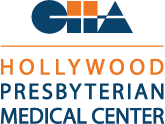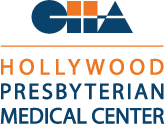Amblyopia is decreased sight in one or both eyes due to abnormal development of vision in infancy or childhood. The condition cannot be corrected with prescription lenses. Ophthalmologists estimate that between 2 and 3 percent of all Americans experience amblyopia,.
The condition is typically first noticed during infancy and the preschool years. Here are a few basic facts about amblyopia.
Types of Amblyopia
Strabismus, which is defined as the misalignment of the eyes, is the most frequent cause of amblyopia. When the eyes are improperly aligned, the brain may ignore the images generated in the misaligned eye to prevent double vision. As a result, the misaligned eye eventually becomes the "lazy" eye. Parents who notice their baby has crossed eyes or some other type of misalignment should contact their pediatric ophthalmologist right away.
In addition, amblyopia can be categorized as either refractive or deprivation. Refractive amblyopia results from uncorrected refractive errors in one or both eyes. One eye may have significant farsightedness, nearsightedness or astigmatism, while the other may not. The brain then only responds to visual stimuli from the "good" eye and ignores information from the "bad" eye, which can result in refractive or anisometropic amblyopia.
Deprivation amblyopia occurs when a cataract or other defect prevents light from entering the eye. Immediate treatment can aid in proper visual development.
The Importance of Early Detection
If amblyopia is detected and treated early in life, a child can achieve normal or near-normal vision. Children with amblyopia who do not receive appropriate treatment may not develop normal visual acuity. The American Academy of Ophthalmology points out that if left untreated, amblyopia can lead to significantly diminished vision.
The main obstacle to early diagnosis is that the condition affects young children who are often unable to describe the symptoms.
According to the Mayo Clinic, treatment for amblyopia is most effective if it occurs before the age of 7. Among those who are between the ages of 7 and their late teens, about 50 percent experience significant improvement in their vision following treatment for the condition.
While there is no substitute for a professional assessment, parents can perform a simple screening test at home for amblyopia. They can use a colorful pirate patch or other child-friendly design to alternately cover and uncover the child’s eye while he or she watches TV or undertakes another task that requires clear vision. If children protest when their parents cover one eye but not the other, amblyopia may be the cause.
Professional Testing Can Take a Variety of Forms
When ophthalmologists screen for amblyopia, they will typically cover one of the child’s eyes and then record how well the uncovered eye tracks a moving object. The ophthalmologist also will stay alert for signs of discomfort when an eye is covered. If a child cries, pulls at the eye patch or tries to look around it, this may be a sign that the covered eye is the "good" eye and the other is affected by amblyopia.
In addition, an ophthalmologist will conduct a comprehensive exam to check for other problems that could lead to poor vision. The AAO cautions that a diagnosis of poor vision in one eye does not necessarily indicate amblyopia. In many cases, corrective lenses are all that is needed to fix a simple refractive error.
The Mayo Clinic notes that among those children who cannot yet verbalize what they see, a diagnostic test for cataracts or amblyopia can be administered. It involves assessing the ability to follow a lighted magnifying device. Older children can be shown pictures or letters of the alphabet as each eye is covered in turn.
Common Treatment
If refractive amblyopia is detected early enough, an ophthalmologist can correct a patient’s vision by prescribing glasses to fix the refractive error and ultimately the refractive amblyopia.
To treat deprivation amblyopia, surgery to remove the cataract is generally indicated. In addition, surgery is frequently involved in the treatment of strabismus amblyopia to properly align the eyes.
In many treatment plans for amblyopia, surgery or a prescription for corrective lenses is followed with eye patching and frequently orthoptic vision therapy exercises to train the eyes to function properly together. Usually, a patient wears an eye patch for a few hours or a full day. The treatment may last up to several months.
A Bangerter filter may also be an effective treatment. The filter, which fits on top of the eyeglasses lens of the better eye, works analogously to an eye patch to train the weaker eye. Eyedrops containing atropine can also temporarily weaken the stronger eye to stimulate the weak one.
The AAO recommends that every child receive a complete vision assessment before the age of four years old. In cases where there is a family history of amblyopia, cataracts, crossed eyes or another serious condition affecting vision, the initial visit should occur in infancy.
 РУССКИЙ
РУССКИЙ  ENGLISH
ENGLISH 


